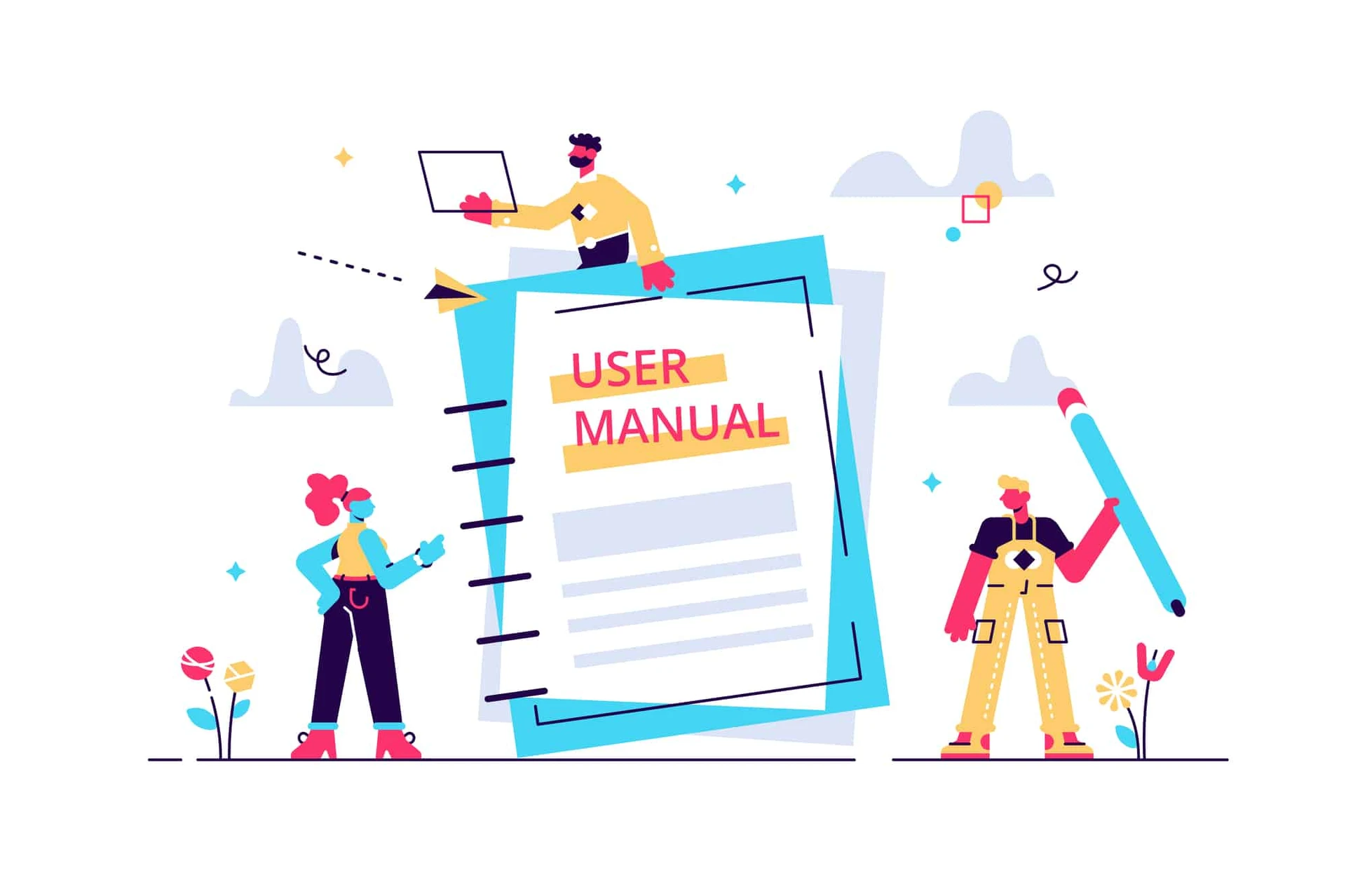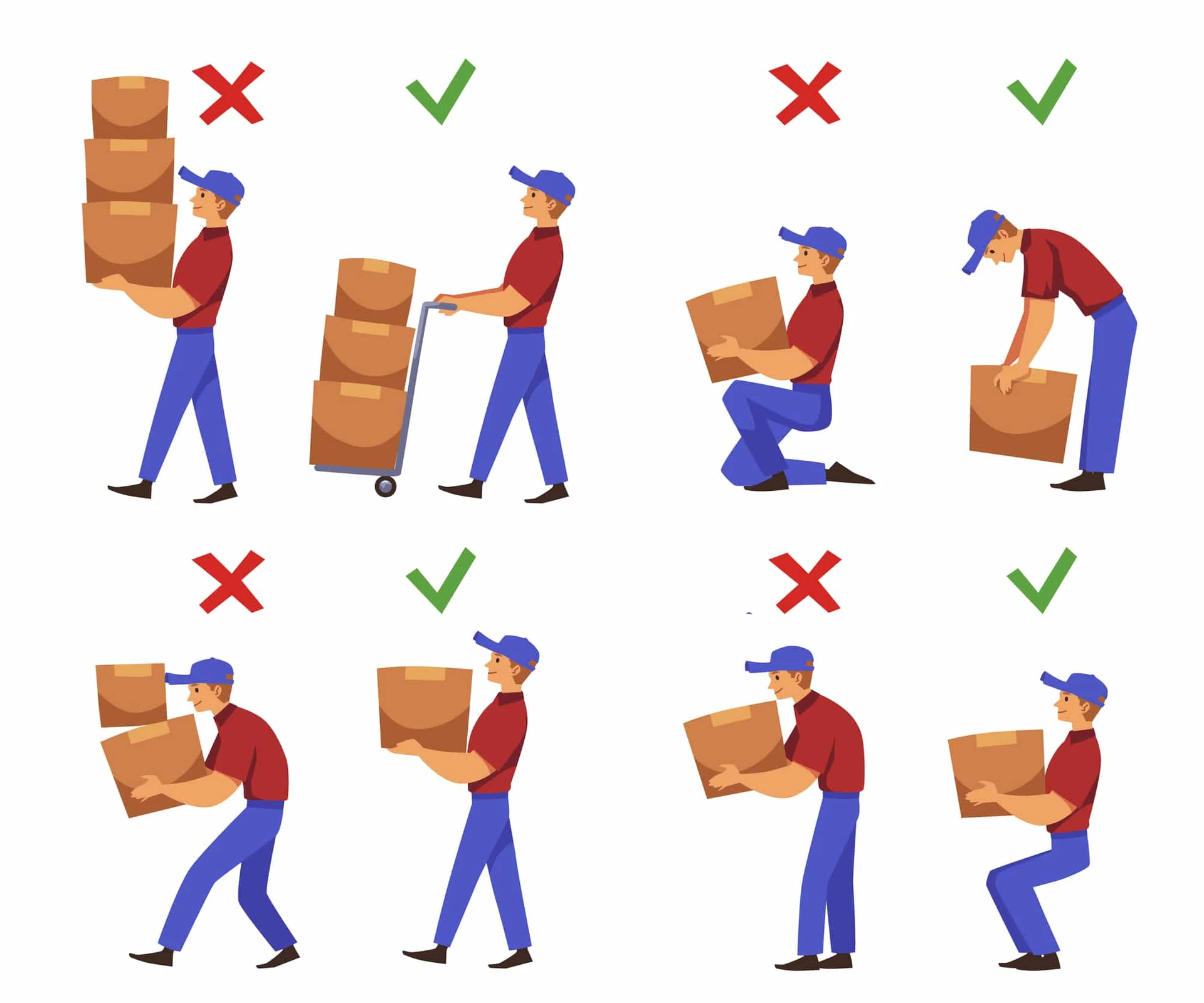From assembling a bookcase to configuring our smartphone, we frequently rely on the booklet of instructions included with our purchase to guide us through the process. Few ever stop to consider what goes into making these essential but underrated tools.
In this post, we will take a look at what it takes to create a practical and helpful manual and the role that technical illustrations play in the process.
Why Are Manuals Important?

The average person is unlikely to notice the number of instruction manuals, user guides, or tech specs they look at on any given day. These invaluable tomes of information may take the form of a simple tri-fold brochure or a multi-page booklet complete with a table of contents, chapters, and a glossary. Regardless of their size, scope, or complexity, they all pack a massive amount of necessary information into a relatively small package.
Well-written instruction manuals allow the end user to perform a skill they often have no professional training in. Think about the last bookshelf or chair that you assembled. Without the enclosed assembly manual, that bookshelf would likely still be a pile of boards, dowels, and screws in the original box.
If you are a business owner, you want your customers to have the best experience with your product or service from the moment of unboxing or first use. User manuals, assembly manuals, and troubleshooting guides help ensure that your customers are empowered to get the very best from your product or service. It also reduces the number of calls to the technical or customer support teams.
So, how do you go about creating the most useful manual?
Best Practices For Creating Illustrated Manuals

As with any project, creating the most effective manual starts with careful forethought and planning. While an assembly manual is going to differ from a smartphone user manual or a car repair manual, there are several common factors that you will need to consider when creating one of these informative guides.
Who, What, When
You will want to take some time at the start to think about the who, what, and why of your illustrated manual project.
Who Are Your End Users?
You will need to start with an understanding of who will be using your manual. Are you creating a furniture assembly manual for consumers who likely have little to no construction experience? Are you writing a technical user manual for a high-end gaming console or tech device whose users are likely to have some basic knowledge of technology? Is it going to be a repair manual that is likely to be used by technicians or skilled individuals with background knowledge of the subject? These are distinctly different end users with different needs. Your illustrated manual should be oriented toward the expected knowledge of the end user.
What Does The End User Need To Know?
Manuals are often tasked with packing a lot of detailed information into a small package. That means that you need to think about what your user needs to know and what they don’t. Manuals are generally written by teams of subject matter experts with an in-depth knowledge of the procedure or product that they are describing. However, it is important to remember that the manual will be used by one of the groups discussed in the previous section. That means that you will need to think about every step or detail from the perspective of the end user and ask yourself what information is critical for them to understand at each step. These are the details that need to be featured in your manual.
When Will The End User Need The Information?
The most effective manuals provide the end user with the information they need at the moment that they need it. This helps keep readers moving step by step through the process or task they are attempting to complete. Too much information up front can leave readers feeling overwhelmed and discouraged before they have even started, and information that is shared in a footnote or glossary rather than at the critical action point can lead to errors and frustrated readers.
The Power Of Illustrations

When you need to convey a great deal of complex or detailed information in a small amount of space, illustrations are the ideal tool for the job. Humans are naturally inclined to process visual cues and are able to process images much faster than blocks of text. Let’s explore some of the many advantages of using illustrations in manuals.
Find Info Quickly
The average person does not sit down and read a manual page by page as if they were reading a novel or an educational book. Instead, a manual is generally used as a tool that informs a person’s activity. In layman’s terms, people are usually working or performing a task while reading a manual. This means that they do not have time to read through paragraphs of text to find the instructions they need. Illustrations make it easy for the end user to quickly locate the critical information they need when they need it.
Universal Communication
Manuals are used by readers around the globe. This means that instructions often have to be translated into several languages. While translation has improved somewhat, it can still be difficult to bridge the language barrier when communicating complex information, and nuanced details can get lost or confused in the process.
Illustrations do not require translation and act as a universal form of communication that is easily understood by all
Simplify Complex Procedures
Illustrations can offer a detailed view that helps to clarify complicated procedures or highly-technical instructions. What could take a few paragraphs to describe accurately can be far easier explained in a single detailed illustration.
Tips For Creating Great Illustrations For Manuals

Creating technical illustrations for an illustrated manual is a highly specialized task that differs from the process of creating illustrations for books, comics, or other creative projects. Technical illustrators must possess the ability to create realistic artistic renderings that are precise and accurate in terms of scale, perspective, detail, and more.
Here are a few tips for making sure the technical illustrations for your illustrated manual hit the mark.
Attention To Detail
Traditional illustrations are an artistic interpretation of a subject or idea. The technical drawings in illustrated manuals must contain much more literal attention to detail. The artist must take into account every finite detail of the task or action being described in each step. Lengths and widths should be noted. Wiring diagrams should include the correct coding of the patterns and colors of the universal wiring codes. Bolts, screws, and other fasteners should be shown at the proper scale, and the location of grooves, attachment points, and other key details should be depicted in every illustration.
Accuracy
This one can’t be stressed enough. Your readers will be relying on the illustration in your manual to assemble your product, configure or troubleshoot their new device, perform maintenance, make repairs, or simply safely use a new purchase. Every single detail in your illustration needs to be accurate. There is nothing more frustrating than attempting to follow the steps in an instruction or assembly manual only to find that the illustrations contradict the written instructions or, worse yet, seem to be for a different product altogether.
Remember, if you are a business or brand producing a user or assembly manual, this small bit of literature is an extension of your customer service team and a direct reflection of the professionalism and quality of your company.
Perspective
Pay close attention to the angle or perspective of every illustration. Consistency is key here. The purpose of the illustration is to provide an accurate visual reference to help the user perform the task being described. It can be confusing if the perspective or angle of the product or subject shifts in each illustration.
Focus
Effective illustrations should focus on one specific task at a time. Large, intricate illustrations with hundreds of labels, arrows, and details can be overwhelming and difficult to interpret. It is far more effective to focus the illustration on the particular action taking place in each step.
Technical illustrators often make use of exploded or pop-out views to show the particular action the user will need to perform. Exploded views are essentially macro illustrations that hone in on a particular portion of the device or area of the object. For example, a car repair manual may feature an exploded view of the wiring harness or vehicle fuse block when describing a basic electrical repair or accessory installation process. This focused illustration will be far more useful than a general drawing of the vehicle engine compartment.
Creating Professional-Quality Illustrated Manuals

When it comes to creating a high-quality illustrated manual for your product, service, or staff, there are several options available to guide you through the process depending on your budget and timeline. Large, well-established brands and businesses often employ design agencies or in-house teams of illustrators and copywriters to produce their illustrated manuals. However, this is costly and often not feasible for small businesses, entrepreneurs, and startups trying to gain a foothold and grow their companies.
Freelance marketplaces offer a more affordable option and provide businesses with access to a wide range of artists who are willing to produce the technical illustrations you need for a fraction of the cost of an in-house team or professional design agency. However, it is difficult to vet the expertise and background knowledge of the freelancers on these platforms, and the quality and consistency can be notoriously hit-or-miss.
Those who are feeling particularly ambitious can try going the DIY route by making use of the many free templates available, which will help guide you through the process of creating a cohesive manual. However, these free templates simply provide the structure and some basic formatting. You will still need a talented technical illustrator to produce detailed drawings for your manual.
That brings us to the final option, a monthly subscription to a creative design service. This option is generally the most affordable and practical choice for most small- to midsize businesses and brands. Creative design services vary in scope and service, with some focusing exclusively on illustration and graphic design, others on video, and still others on copywriting and marketing materials. The best value can be found in creative design services like Flocksy, which offers all of the design services you need for one flat-rate monthly subscription price.
Using Flocksy To Create An Illustrated Manual

Flocksy makes it simple to get the high-quality technical drawings you need for your illustrated manual. Simply choose your monthly subscription package, log into your account, and navigate to the Custom Illustrations menu. From there, you will see a variety of options to create illustrations for a range of purposes. Choose the Illustrated Manual options and use the intuitive project brief to provide your dedicated illustrator with all of the information and details they need to get started on your project. Flocksy takes communication seriously, so you will always have ready access to both your illustrator and a project manager who can work with you to make sure you get the precisely-detailed technical illustrations that you need.
Best of all, your unlimited monthly subscription includes unlimited illustration projects, as well as unlimited graphic design, video editing, copywriting, and much more. That means that you can request all of the technical illustrations you need and get professional text instruction written or refined by a professional copywriter. Do you want to add a video to introduce your product or service or as an added tool to enhance your online manual? The video editing team can help you do just that. While you’re at it you can have a website designed to host your online wiki manual and social media posts crafted to hype your launch. Flocksy makes it all possible for one flat-rate monthly price!
